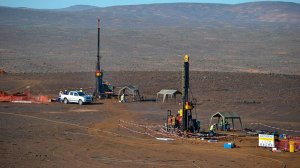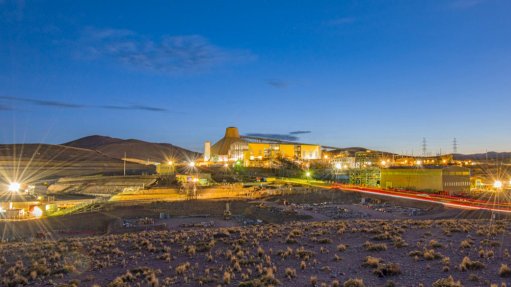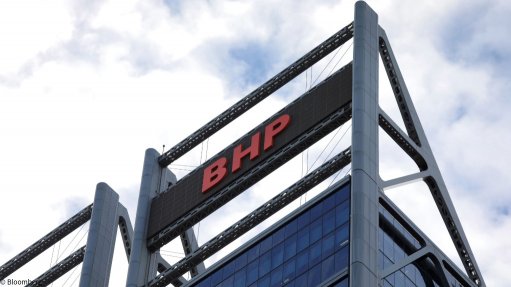Statistical method assists in exploration borehole drilling



DEFINITIVE APPROACH The Variance Towers technique is used to estimate the minimum number of boreholes to find the information required to declare the inferred to indicated mineral resources
INDUSTRY DIRECTIVE Venmyn Deloitte suggests the mining industry should take its cue from the oil and gas business in introducing more advanced modelling techniques
Photo by Bloomberg
Foreseeing that the mining industry would need to adopt a fresh approach to determining mineral resources and the exploration methods required to do so, professional services firm Venmyn Deloitte introduced the Variance Towers statistical method in 2010 to assist miners with early-stage exploration.
“This technique is used to estimate the minimum number of boreholes to find the information required to declare the inferred to indicated mineral resources,” Venmyn Deloitte mineral project analyst Tarryn Orford tells Mining Weekly.
This is based on the variance of the parameter, such as grade or reef width, around the mean within a certain confidence limit, she says.
The Variance Towers technique was a consequence of shrinking exploration budgets and an increasing demand for a more definitive approach to determining drill spacing to decrease the number of boreholes required to provide enough information for an accurate estimate, Orford highlights.
“In light of this, improved efficiency of current techniques employed during exploration should be a key focus. . . to lower costs and improve results, rather than cutting exploration projects and focusing only on operating assets,” Orford says.
Meanwhile, Venmyn Deloitte is assisting junior miners in identifying a starting point for exploration, as the miners are sometimes uncertain about where to start and the number of boreholes that need to be drilled during exploration, Orford notes.
Several junior miners, including platinum exploration company Bauba Platinum, which holds various minerals prospecting rights for platinum mineralisation in the eastern Bushveld, have used the Variance Towers technique in the past three years.
This technique is useful for early-stage exploration projects where there is a need to determine the borehole grid spacing based on relatively little information, Orford says.
The process is iterative and is reviewed as drillholes are completed and more information becomes available. In doing so, it refines the estimates made, Orford explains, noting that Variance Towers is a method typically based on historical drilling or sampling results and on information from adjacent mining projects with a similar geology.
“The Variance Towers method has been particularly effective during juniors’ early exploration to maintain reduced costs by preventing overdrilling, while obtaining the best possible results from the optimal number of drillholes,” Orford highlights.
The technique is also used to help juniors increase their understanding of what their exploration should include and the reasoning behind it, she notes, emphasising that the Variance Towers technique is a simple and quick method.
However, the method “cannot be carried out unless the geology of the mineral deposit is understood and the borehole samples can be categorised into appropriate populations for which the statistics are valid”, Venmyn Deloitte noted in its ‘Using simple statistics to define confidence limits for reliable quantitative definition of mineral resources – the Venmyn Variance Towers’ report.
Orford therefore stresses that experienced geologists are always required to work with and understand the implications of the Variance Towers results.
“Further, once exploration has begun in earnest and has passed from early-stage to advanced-stage exploration, conventional geostatistical methods to calculate quantitative mineral resources at high levels of confidence should take precedence,” she suggests.
Geological Innovation
“There is definitely a demand for the industry to be innovative and come up with efficient solutions for improving the industry in general,” Orford notes, reiterating Venmyn Deloitte MD Andy Clay’s opinion that the oil and gas industry is a good example in terms of innovation.
Clay told Mining Weekly in May that the oil and gas sector “has some brilliant techniques for multidimensional technical assessment”. He further suggests that the mining industry should take its cue from the oil and gas business when it comes to introducing more advanced modelling techniques.
Moreover, as the costs involved in the oil and gas sectors are exponentially higher, the focus is to improve each aspect as much as possible and invest in these aspects to improve long-term solutions, subsequently decreasing overall costs and improving efficiency, Orford says, noting that the mining industry could benefit from using a number of techniques implemented in the oil and gas industry.
Orford suggests that, “since the oil and gas industry uses a probabilistic approach to defining reserve boundaries, it is appropriate to introduce a similar statistical method for minerals”.
Comments
Press Office
Announcements
What's On
Subscribe to improve your user experience...
Option 1 (equivalent of R125 a month):
Receive a weekly copy of Creamer Media's Engineering News & Mining Weekly magazine
(print copy for those in South Africa and e-magazine for those outside of South Africa)
Receive daily email newsletters
Access to full search results
Access archive of magazine back copies
Access to Projects in Progress
Access to ONE Research Report of your choice in PDF format
Option 2 (equivalent of R375 a month):
All benefits from Option 1
PLUS
Access to Creamer Media's Research Channel Africa for ALL Research Reports, in PDF format, on various industrial and mining sectors
including Electricity; Water; Energy Transition; Hydrogen; Roads, Rail and Ports; Coal; Gold; Platinum; Battery Metals; etc.
Already a subscriber?
Forgotten your password?
Receive weekly copy of Creamer Media's Engineering News & Mining Weekly magazine (print copy for those in South Africa and e-magazine for those outside of South Africa)
➕
Recieve daily email newsletters
➕
Access to full search results
➕
Access archive of magazine back copies
➕
Access to Projects in Progress
➕
Access to ONE Research Report of your choice in PDF format
RESEARCH CHANNEL AFRICA
R4500 (equivalent of R375 a month)
SUBSCRIBEAll benefits from Option 1
➕
Access to Creamer Media's Research Channel Africa for ALL Research Reports on various industrial and mining sectors, in PDF format, including on:
Electricity
➕
Water
➕
Energy Transition
➕
Hydrogen
➕
Roads, Rail and Ports
➕
Coal
➕
Gold
➕
Platinum
➕
Battery Metals
➕
etc.
Receive all benefits from Option 1 or Option 2 delivered to numerous people at your company
➕
Multiple User names and Passwords for simultaneous log-ins
➕
Intranet integration access to all in your organisation




















